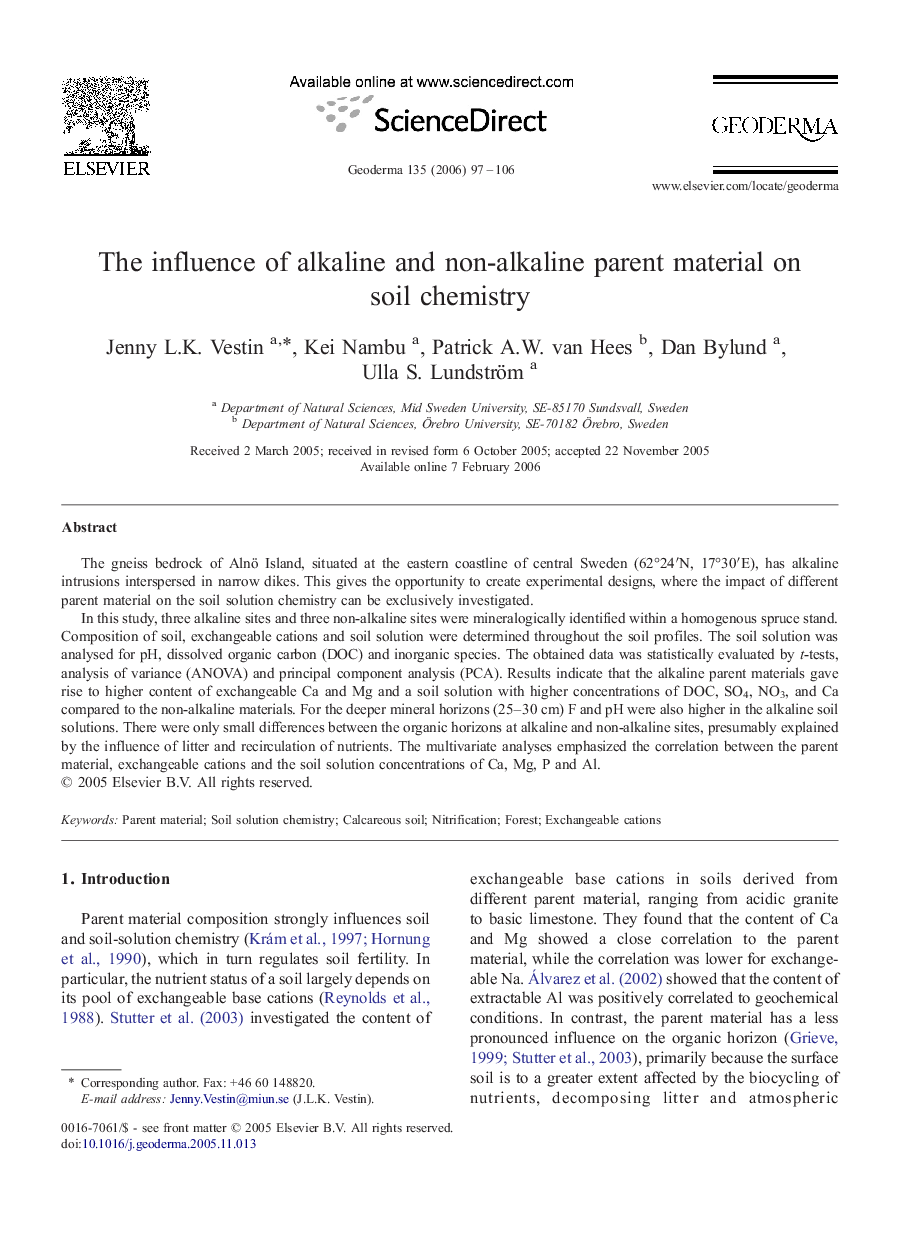| Article ID | Journal | Published Year | Pages | File Type |
|---|---|---|---|---|
| 4575712 | Geoderma | 2006 | 10 Pages |
The gneiss bedrock of Alnö Island, situated at the eastern coastline of central Sweden (62°24′N, 17°30′E), has alkaline intrusions interspersed in narrow dikes. This gives the opportunity to create experimental designs, where the impact of different parent material on the soil solution chemistry can be exclusively investigated.In this study, three alkaline sites and three non-alkaline sites were mineralogically identified within a homogenous spruce stand. Composition of soil, exchangeable cations and soil solution were determined throughout the soil profiles. The soil solution was analysed for pH, dissolved organic carbon (DOC) and inorganic species. The obtained data was statistically evaluated by t-tests, analysis of variance (ANOVA) and principal component analysis (PCA). Results indicate that the alkaline parent materials gave rise to higher content of exchangeable Ca and Mg and a soil solution with higher concentrations of DOC, SO4, NO3, and Ca compared to the non-alkaline materials. For the deeper mineral horizons (25–30 cm) F and pH were also higher in the alkaline soil solutions. There were only small differences between the organic horizons at alkaline and non-alkaline sites, presumably explained by the influence of litter and recirculation of nutrients. The multivariate analyses emphasized the correlation between the parent material, exchangeable cations and the soil solution concentrations of Ca, Mg, P and Al.
